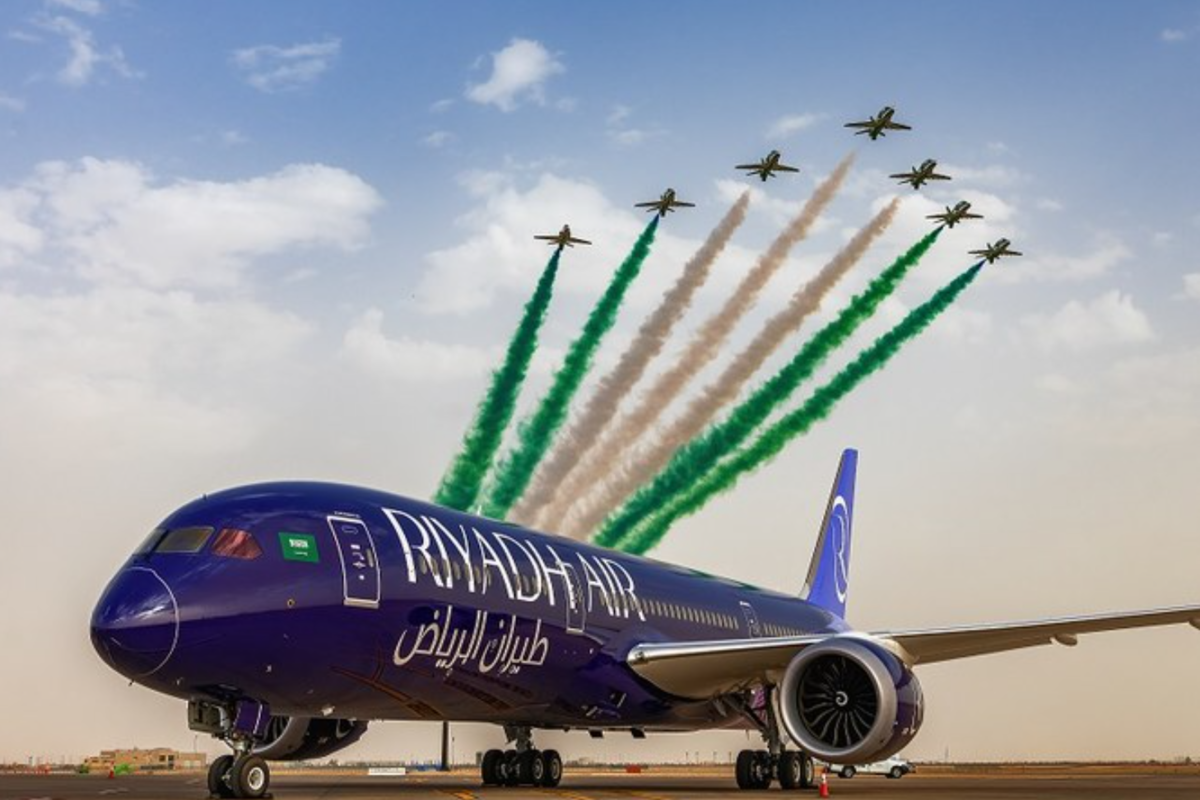RIYADH: Middle Eastern airlines saw passenger demand grow 9.7% in May from a year earlier, helped by an increase in Asia-related travel, according to an industry group.
In its latest report, the International Air Transport Association said total capacity of airlines in the region grew 9 percent in May from a year earlier.
Additionally, the Middle East accounted for 9.4% of global passenger numbers in May, unchanged from the previous month.
Middle Eastern countries, including Saudi Arabia, have been strengthening their aviation sectors in recent years as they diversify their economies to reduce their decades-old reliance on oil.
Saudi Arabia’s national aviation strategy aims to triple passenger numbers compared to 2019, handle 4.5 million tonnes of cargo and establish more than 250 direct flights from the Kingdom’s airports to locations around the world.
A report released in May by Saudi Arabia’s General Authority of Civil Aviation projected the aviation sector would contribute $21 billion to the Kingdom’s gross domestic product in 2023.
The IATA report highlighted the strength of travel between the two regions, noting that routes between Asia and the Middle East are “second only to intra-Asia at RPK (revenue passenger kilometres) level”.
He added: “The route has recovered to 2019 levels and is currently setting a new record for 2024 overall, 32 percent above the same level in 2019, indicating growing demand for air travel between the two regions. The drivers of this disproportionate demand are geopolitical tensions and the war in Ukraine, with passengers heading to Asia via the Middle East as a safer route.”
The war between Russia and Ukraine also potentially impacts the continued growth of the Europe-Middle East shipping route, which saw a second consecutive annual increase in RPKs from April to May, reversing a historical pattern of declines for this period, the report noted.
“In the coming months it will become clearer to what extent these trends are linked to the Russia-Ukraine conflict,” IATA said.
A separate report released by IATA earlier this month revealed that Middle Eastern airlines saw cargo demand increase 15.3% year-on-year in May, driven by an increase in e-commerce and maritime affairs.
The report also added that total cargo loads of airlines in the region increased 2.7 percent in May compared to the same month last year.
IATA also noted that the Middle East handled 13.5 percent of global cargo volume, a figure unchanged from the previous month.
Global passenger demand outlook
Global passenger demand, measured in RPKs, grew 10.7 percent in May compared to the same period last year, the report said.
Similarly, total capacity, measured in available seat kilometres, also increased by 8.5% year-on-year in the fifth month of this year.
“Airline seat occupancy was 83.4%, the highest on record for this month. Ticket sales for the first half of the peak season in May were up nearly 6%, with the growth trend showing no signs of abating,” IATA Director General Willie Walsh said.
“Airlines are doing all they can to ensure smooth journeys for all travellers during the peak northern hemisphere summer period,” he added.
Asia Pacific region drives travel demand
Airlines operating in the Asia-Pacific region led global passenger demand, recording a 27% increase in May compared to the same month in 2023, according to the report.
IATA noted that total seat capacity for Asia Pacific airlines increased 26 percent year-on-year, with load factor rising to 81.6 percent.
Moreover, airlines in the Asia-Pacific region handled 31.7% of the world’s passengers in May, followed by Europe and North America with 27.1% and 24.2%, respectively.
Latin American airlines saw passenger demand increase 15.9% in May compared to the same month last year. In addition, their total capacity increased by 9.7%.
Similarly, Latin American airline load factors reached 85.1% in May, the highest of all regions.
Meanwhile, African airlines saw demand grow 14.1% year-on-year, while the total number of seats available to these airlines jumped 8.2% in the same period.
Load factors for African airlines also rose to 72.3% in May, up 3.7% year-on-year.
This was the fastest load factor growth of any region, but Africa still had the lowest load factor overall.
Similarly, passenger demand at European airlines increased 11.7% in May compared to a year earlier.
Additionally, the total number of seats available to these airlines increased by 11.3% in May compared to the same month last year, and load factor increased by 0.03 percentage points to 84.7%.
However, passenger demand growth for North American airlines was 8.7%, the slowest of all regions.
Seat capacity on North American airlines increased 7.7% in May compared to the same month a year ago, but load factor fell 1.2 percentage points to 84% during the same period.
Meanwhile, IATA said domestic traffic in May increased 4.7% compared to the same month last year, and load factor rose 3.8 points to 84.5%.
IATA also noted that it is optimistic that global passenger demand will grow in the future.
“Overall, the increase in bookings made in May and early June for travel in the second half of June and throughout July suggests that both domestic and international air traffic and demand are expected to maintain positive trends,” the industry group said.
Saudi Arabia’s growth

Riyadh Air is scheduled to begin operations in 2025. File
Developing Saudi Arabia’s aviation sector is a key pillar of the Kingdom’s economic diversification plan, Vision 2030, and a new roadmap was unveiled in May to boost the business travel sector.
Saudi Arabia’s aviation sector is expected to contribute $21 billion to the country’s gross domestic product in 2023, and generate an additional $32.2 billion in tourism revenues.
Abdul Aziz Al Douailai, director-general of the Saudi Arabian General Authority for Civil Aviation, said at the Future Aviation Forum in Riyadh in May that the Saudi aviation industry will carry a record 112 million passengers in 2023, up from 88 million in 2022, representing a 27 percent increase from the previous year.
As part of plans to further boost its aviation sector, Saudi Arabia aims to launch a new airline, the Public Investment Fund-backed Riyadh Air, in 2025 and serve 100 countries by 2030.

